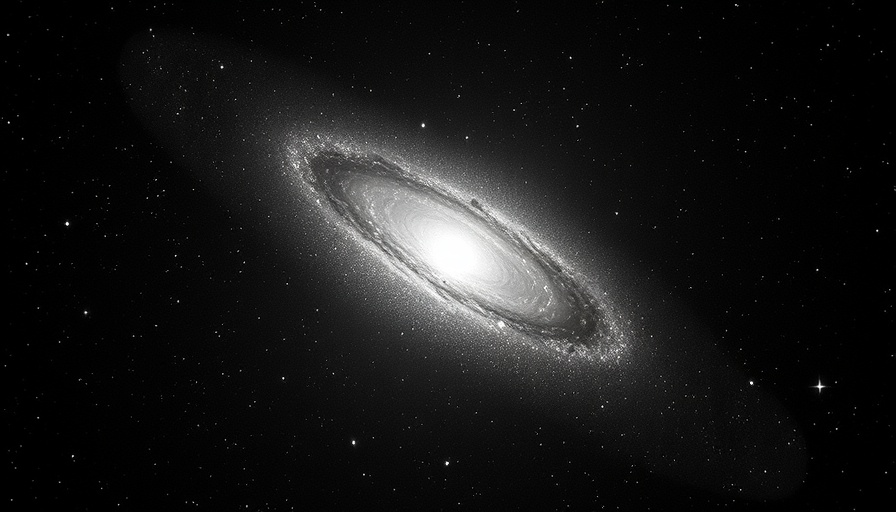
What Makes KiDS J0842+0059 a Cosmic Fossil?
Astronomers recently stumbled upon a truly remarkable cosmic find—a galaxy dubbed KiDS J0842+0059, which has remarkably remained 'frozen in time' for about 7 billion years. Located 3 billion light-years away, this galaxy serves as a pristine time capsule offering a glimpse into the universe's earlier stages. But what characterizes a 'fossil galaxy'? These formations are unique in that they have not experienced the usual cosmic interactions, such as collisions or mergers, allowing them to maintain their original structure and composition. To put it simply, they represent the ancient history of the cosmos, much like dinosaurs are pivotal for understanding terrestrial evolution.
Unearthing the Secrets of Cosmic Evolution
The significance of studying KiDS J0842+0059 extends far beyond curiosity. Similar to how paleontologists analyze dinosaur fossils to understand life on Earth, astronomers can unlock the secrets of galaxy formation and evolution through these fossil galaxies. Observations from the Large Binocular Telescope (LBT) revealed that KiDS J0842+0059 has an impressive stellar mass equivalent to approximately 100 billion suns but is notably more compact than similar mass galaxies. Such findings challenge existing theories about the formation of massive galaxies. They hint at a quieter world in cosmic history where marked evolutionary changes starkly contrast with the frenetic activity observed in the universe today.
Evidence from Recent Research
Utilizing advanced imaging techniques, astronomers were able to obtain high-resolution images of this ancient relic, resulting in data ten times sharper than previous observations. The research team, led by renowned astrophysicists, confirmed the compact nature and stunted evolution of KiDS J0842+0059, positioning it alongside other notable relic galaxies like NGC 1277. This raises critical questions about how and why certain galaxies diverge from expected growth patterns. Why do some galaxies grow robustly, while others, like KiDS J0842+0059 and NGC 1277, appear to stagnate? These inquiries are essential for piecing together the cosmic puzzle.
The Role of Cosmic Fossils in Modern Astronomy
As exploring the cosmos continues at an exponential pace, the implications of such discoveries could reshape our understanding of the universe’s history. Beyond providing a snapshot of an earlier cosmic state, fossil galaxies like KiDS J0842+0059 may shed light on the environmental conditions prevalent during the earliest formations of galaxies. Just as technological innovations have led to breakthroughs across various fields, understanding ancient cosmic structures could propel advancements in astrophysics, offering greater insights into dark matter, galaxy formation, and even the future trajectory of our own Milky Way.
Final Thoughts on Cosmic Discovery
Discoveries like KiDS J0842+0059 not only excite astronomers but also the general populace fascinated by the universe. The intersection of space exploration and innovative technology sheds light on humanity's endless curiosity and desire to explore the unknown. The story of this galaxy is a monumental reminder of how our universe is full of mysteries yet to be unraveled. As we continue to gaze into the cosmos, we step closer to understanding our origins and, perhaps, our destiny.
 Add Row
Add Row  Add
Add 




Write A Comment